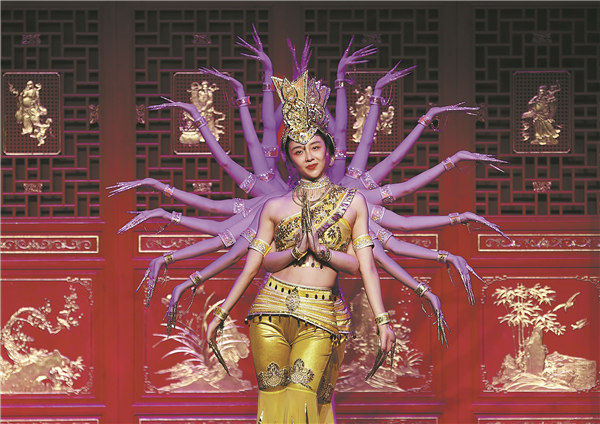

To the sound of elegant and archaic melodies, dancers performed hip twists and knee bends, extended their arms, and moved gracefully to the rhythm of instruments like drums and gongs. Their facial expressions, graceful hand movements, flexible arm positions, and costumes, were all based on images depicted in the murals.
"The dances and the murals are both integral parts of the cultural and artistic heritage of Dunhuang. The murals in the Mogao Caves often depict scenes of dance and dancers, which provide valuable insight into the dance styles, costumes, and cultural practices of the era," says Gao, who is the founder of the Dunhuang dance teaching system, and a prominent expert of the Dunhuang dance at the Lanzhou University of Arts and Sciences. She has dedicated her entire life to dance, devoting her energy to uncovering and developing Dunhuang's rich artistic heritage.
The dancer-turned-choreographer was inspired by the murals when she created the highly successful dance drama, Silk Road Flower Rain, in 1979. Over the course of a year, Gao visited the Mogao Caves five times, meticulously studying each of the 400 caves with a flashlight and candles.
She replicated over 200 dance poses from the murals and read thousands of pages from artistic and historical literature, taking extensive notes. Her challenge was to translate the static images into dynamic, fluid movements.
"I was intrigued by Dunhuang dance, which is characterized by its delicate and graceful movements. The murals capture an ethereal and elegant charm reminiscent of celestial beings," says Gao. "They helped us understand how dance was an essential part of religious and cultural rituals, reflecting both the spiritual and social aspects of the time."